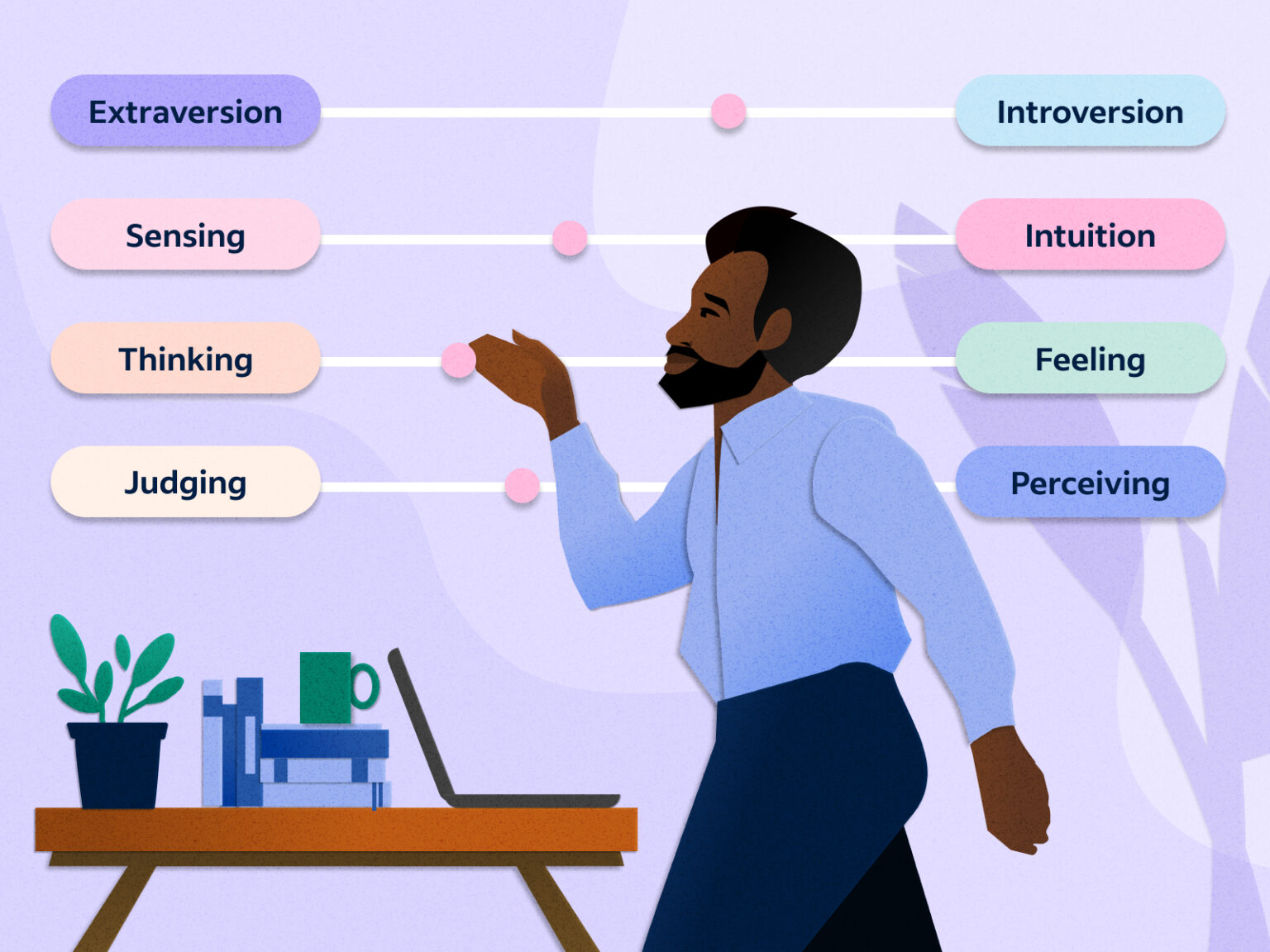
Introduction
Understanding personality types and psychological tendencies is crucial in the realm of relationship coaching. Human behaviour is complex and influenced by various factors, including upbringing, experiences, and innate traits. By exploring different personality types and psychological tendencies, relationship coaches can provide targeted support to individuals and couples seeking to enhance their relationships.
Personality types encompass a range of characteristics that shape how individuals perceive and interact with the world around them. These types often manifest in various aspects of behaviour, communication styles, and emotional responses. Additionally, psychological tendencies such as attachment styles, communication patterns, and love languages play significant roles in shaping relationship dynamics.
This blog will delve into the diverse landscape of personality types and psychological tendencies relevant to relationships. By gaining insights into these factors, individuals and couples can better understand themselves and their partners, leading to improved communication, conflict resolution, and overall relationship satisfaction. Whether you’re embarking on a journey of self-discovery or seeking to strengthen your bond with your partner, exploring personality types and psychological tendencies can pave the way for deeper connection and fulfilment in your relationships.
In the context of relationship coaching, understanding the different personality types and psychological factors can help relationship coaches tailor their approach to meet the unique needs and preferences of each client, fostering deeper understanding, communication, and connection within relationships.
Here are some common personality types and psychological factors relevant to relationships:
- Secure: Individuals with a secure attachment style are comfortable with intimacy and autonomy. They tend to have healthy, balanced relationships.
- Anxious-Preoccupied: People with this attachment style often fear abandonment and seek reassurance from their partners. They may be overly sensitive to relationship dynamics and prone to jealousy or clinginess.
- Dismissive-Avoidant: Individuals with a dismissive-avoidant attachment style prioritize independence and may struggle with intimacy. They tend to downplay the importance of relationships and may avoid emotional closeness.
- Fearful-Avoidant (Disorganized): This attachment style combines elements of both anxious and avoidant attachment. People with a fearful-avoidant attachment style may desire closeness but fear getting hurt, leading to ambivalence and fluctuating behaviours in relationships.
For a deeper understanding of different attachment styles, you can read the Attachment Theory blog.
- Personality Types
- Introversion vs. Extroversion: Introverts may need more alone time to recharge and may prefer deeper one-on-one interactions, while extroverts thrive in social settings and enjoy frequent communication.
- Sensing vs. Intuition: Sensing types tend to focus on concrete details and practicality, while intuitive types are more imaginative and future-oriented in their thinking.
- Thinking vs. Feeling: Thinking types prioritize logic and reason in decision-making, while feeling types consider emotions and values. This difference can impact communication and conflict resolution styles.
- Judging vs. Perceiving: Judging types prefer structure and organization, while perceiving types are more adaptable and spontaneous. Mismatched preferences in this area can lead to tension over planning and decision-making.
- Communication Styles
- Assertive: Assertive communicators express their needs and opinions clearly and respectfully, fostering open dialogue in relationships.
- Passive: Passive communicators may avoid conflict and struggle to assert themselves, leading to unmet needs and resentment.
- Aggressive: Aggressive communicators may dominate conversations, disregard others’ feelings, and resort to blaming or attacking behaviour during conflicts.
- Passive-Aggressive: Passive-aggressive communicators express hostility indirectly, often through sarcasm, silent treatment, or backhanded compliments.
- Love Languages
- Words of Affirmation: People who value words of affirmation appreciate verbal expressions of love, praise, and encouragement.
- Quality Time: Quality time love language emphasizes the importance of spending meaningful, undivided attention with a partner.
- Acts of Service: Acts of service love language involves doing thoughtful gestures and tasks to show love and support.
- Physical Touch: Physical touch love language centres on the significance of physical affection, such as hugs, kisses, and hand-holding.
- Receiving Gifts: People who value receiving gifts feel loved and appreciated when they receive thoughtful presents from their partners.
Personality Types
let’s delve into the Myers-Briggs Type Indicator (MBTI). It’s a popular personality typing system based on Carl Jung’s theory of psychological types. The MBTI classifies individuals into 16 distinct personality types based on four pairs of preferences:
- Extraversion (E) vs. Introversion (I): This dimension reflects how individuals interact with the world and gain energy. Extraverts (E) tend to be outgoing, social, and energized by interactions with others, while introverts (I) are more reserved, introspective, and recharge by spending time alone or in small groups.
Example: An Extraverted person might enjoy attending parties and networking events, while an Introverted person might prefer quiet evenings at home reading a book.
- Sensing (S) vs. Intuition (N): This dimension pertains to how individuals gather information and perceive the world. Sensors (S) rely on their five senses and prefer concrete, tangible information. Intuitive (N) focus on patterns, possibilities, and abstract concepts.
Example: A Sensing individual might enjoy hands-on activities and prefer detailed instructions, while an Intuitive individual might be more interested in brainstorming ideas and exploring hypothetical scenarios.
- Thinking (T) vs. Feeling (F): This dimension concerns how individuals make decisions and evaluate information. Thinkers (T) prioritize logic, objective analysis, and consistency, while Feelers (F) prioritize empathy, harmony, and considering the impact on others.
Example: A Thinking person might make decisions based on facts and data, while a Feeling person might consider how their decisions will affect the people involved and prioritize maintaining harmonious relationships.
- Judging (J) vs. Perceiving (P): This dimension reflects how individuals approach the external world and organize their lives. Judging types (J) prefer structure, planning, and closure while Perceiving types (P) prefer flexibility, spontaneity, and keeping options open.
Example: A Judging individual might enjoy making to-do lists and planning their schedule in advance, while a Perceiving individual might be more adaptable and comfortable with making decisions as they go along.
Each of these preferences combines to create 16 possible personality types, such as ISTJ (Introverted, Sensing, Thinking, Judging), ENFP (Extraverted, Intuitive, Feeling, Perceiving), or INFJ (Introverted, Intuitive, Feeling, Judging). These types provide insights into how individuals perceive the world, make decisions, and interact with others, although it’s important to remember that no type is inherently better or worse than another.
Another well-known personality typing system is the Big Five personality traits, which categorizes personalities based on five broad dimensions.
The Big Five personality traits, also known as the Five Factor Model (FFM), is a widely accepted framework for understanding personality. It categorizes individuals based on five broad dimensions:
Openness to experience: This dimension reflects a person’s willingness to try new things, their imagination, and their intellectual curiosity. High scorers are often creative, open-minded, and adventurous, while low scorers may be more traditional and prefer routine.
Conscientiousness: Conscientiousness relates to how organized, responsible, and dependable a person is. High scorers are often disciplined, diligent, and detail-oriented, while low scorers may be more spontaneous and less focused on planning.
Extraversion: Extraversion refers to the extent to which a person is outgoing, sociable, and energetic. High scorers tend to be talkative, assertive, and enjoy socializing, while low scorers may be more reserved and prefer solitude or smaller gatherings.
Agreeableness: Agreeableness reflects how cooperative, empathetic, and compassionate a person is. High scorers are typically considerate, trusting, and empathetic, while low scorers may be more sceptical and less concerned with others’ well-being.
Neuroticism: Neuroticism measures the degree of emotional instability and negative emotions experienced by an individual. High scorers may be prone to anxiety, moodiness, and stress, while low scorers tend to be more emotionally stable and resilient.
These five traits are thought to capture the most important and universal aspects of personality, and individuals can be assessed on a continuum for each trait. The Big Five provides a comprehensive framework for understanding individual differences in personality across cultures and contexts.
Communication Styles
Communication styles in relationships can vary widely and understanding these differences can greatly improve relationship dynamics. Here are some common communication styles:
Assertive Communication: This style involves expressing thoughts, feelings, and needs in a clear, direct, and respectful manner. Assertive communicators are able to advocate for themselves while also considering the needs of others. Sarah expresses to her partner, “I feel overwhelmed with my workload lately. I need some help around the house so that we can share the responsibilities more evenly.”
Passive Communication: Passive communicators tend to avoid expressing their thoughts, feelings, and needs, often out of fear of conflict or rejection. They may struggle to assert themselves and may prioritize keeping the peace over addressing issues. John feels upset when his partner cancels their plans last minute, but he doesn’t voice his feelings. Instead, he silently accepts the change and says, “It’s okay, I understand.”
Aggressive Communication: Aggressive communicators tend to express their thoughts, feelings, and needs in a forceful and confrontational manner. They may prioritize their own needs over others and may resort to blaming, criticizing, or belittling others to assert dominance. During an argument about finances, Alex angrily shouts at his partner, “You’re always spending money recklessly! You never think about our future!”
Passive-Aggressive Communication: This style involves indirectly expressing hostility or resentment through subtle or passive means, such as sarcasm, backhanded compliments, or intentionally ignoring requests. Passive-aggressive communicators may struggle to express their feelings openly and directly. Emily is annoyed that her partner forgot to take out the trash again. Instead of addressing it directly, she says with a sigh, “Oh, I guess I’ll just take out the trash like always. It’s not like anyone else notices.”
Assertive-Aggressive Communication: Assertive-aggressive communicators combine aspects of assertive and aggressive communication styles. They may assert themselves confidently but in a way that disregards or dismisses the feelings and needs of others. Chris asserts his opinion forcefully during a discussion with his partner, dismissing their viewpoint entirely: “No, you’re wrong. My way is the only logical way to handle this.”
Emotionally Intelligent Communication: This style involves being aware of one’s own emotions and those of others, and communicating in a way that fosters empathy, understanding, and mutual respect. Emotionally intelligent communicators strive to listen actively, validate feelings, and seek win-win solutions. Mia notices that her partner seems stressed after a long day at work. She asks gently, “You seem tense. Is everything okay?” Then she listens attentively, validates their feelings, and offers support without judgment.
Understanding and practising effective communication skills, such as active listening, empathy, and assertiveness, can help individuals navigate relationship challenges and build healthier connections with others.
In healthy relationships, assertive and emotionally intelligent communication styles tend to foster understanding, trust, and mutual respect, while passive, aggressive, or passive-aggressive communication styles can lead to misunderstandings, resentment, and conflict.
Love Languages
The concept of “love languages” was popularized by Dr. Gary Chapman in his book “The Five Love Languages.” According to Chapman, people express and experience love in different ways, which he categorizes into five main love languages:
Words of Affirmation: This love language involves expressing affection and appreciation through verbal affirmations, compliments, words of encouragement, and expressions of love and gratitude.
Quality Time: Individuals with this love language value spending meaningful, undivided attention with their partner. This could involve engaging in activities together, having deep conversations, or simply being present and attentive to each other.
Acts of Service: For individuals with this love language, actions speak louder than words. They feel loved and valued when their partner shows care and thoughtfulness through acts of service, such as doing chores, running errands, or providing practical assistance.
Physical Touch: This love language revolves around physical affection and intimacy. It includes gestures like holding hands, hugging, kissing, cuddling, and sexual intimacy, which communicates love, warmth, and connection.
Receiving Gifts: People with this love language appreciate tangible expressions of love and thoughtfulness. It’s not about the monetary value of the gift but the sentiment behind it. Gifts can be simple or extravagant, but they serve as symbols of love, thoughtfulness, and appreciation.
Understanding your own and your partner’s love languages can help strengthen your relationship by ensuring that you both feel loved and appreciated in ways that resonate with you individually. It’s important to communicate your love language preferences to each other and make efforts to express love in ways that are meaningful to your partner. Additionally, being aware of your partner’s love language can help you recognize their attempts to express love, even if it’s not in your preferred love language.
What is my personality type?
Discovering your personality type can be a valuable journey of self-discovery. Here are several methods you can use to find out your type:
Take a Personality Assessment: There are various personality assessments available online based on different personality typing systems like the Myers-Briggs Type Indicator (MBTI), the Big Five, or the Enneagram. These assessments typically consist of a series of questions designed to gauge your preferences, traits, and behaviours. While these assessments can provide a starting point, it’s important to approach them with an open mind and consider the results as one perspective on your personality.
Reflect on Your Preferences: Take some time to reflect on how you typically approach different situations, interact with others, and make decisions. Consider whether you tend to be more outgoing or reserved (Extraversion vs. Introversion), whether you rely more on facts or intuition (Sensing vs. Intuition), whether you prioritize logic or empathy in decision-making (Thinking vs. Feeling), and whether you prefer structure or flexibility in your daily life (Judging vs. Perceiving). Reflecting on these preferences can provide insight into your personality type.
Seek Feedback from Others: Sometimes, those closest to us can offer valuable insights into our personality traits and tendencies. Consider asking friends, family members, or trusted colleagues how they perceive you in different situations. Their observations and feedback can complement your self-reflection and help you gain a more holistic understanding of your personality.
Explore Different Typing Systems: While the MBTI is one of the most well-known personality typing systems, there are other frameworks like the Big Five, the Enneagram, or the DISC assessment. Exploring different typing systems and comparing their descriptions of personality traits and types can help you gain a deeper understanding of yourself from multiple perspectives.
Reflect on Past Experiences: Think about past experiences, successes, challenges, and relationships in your life. Consider how your personality traits may have influenced your reactions, choices, and interactions in those situations. Identifying recurring patterns or themes can provide clues about your underlying personality type.
Remember that personality is complex and multifaceted, and no single typing system can fully capture the richness of individuality. Use these methods as tools for self-reflection and exploration, and embrace the journey of discovering and understanding your unique personality.
Conclusion
Understanding personality types can significantly enhance relationships by providing insights into individual differences, communication styles, and emotional needs. Each person has unique preferences, tendencies, and ways of interacting with the world, which can influence how they perceive, express, and receive love. By recognizing and respecting these differences, partners can cultivate empathy, understanding, and acceptance within their relationship.
Moreover, knowing one’s own personality type and understanding their partner’s type can facilitate effective communication, conflict resolution, and mutual support. It allows partners to tailor their interactions, expressions of love, and behaviours to better meet each other’s needs and preferences. For example, an Introverted partner may appreciate quiet, intimate gestures of affection, while an Extraverted partner may thrive on social activities and shared experiences.
Additionally, awareness of personality types can help couples navigate challenges and appreciate the strengths that each partner brings to the relationship. By acknowledging and valuing their differences, partners can foster a sense of teamwork, collaboration, and mutual growth.
Ultimately, understanding personality types in relationships fosters deeper connections, enhances emotional intimacy, and strengthens the bond between partners. It lays the foundation for a supportive, harmonious partnership built on acceptance, respect, and love.


 Title
Title  Date
Date Category
Category